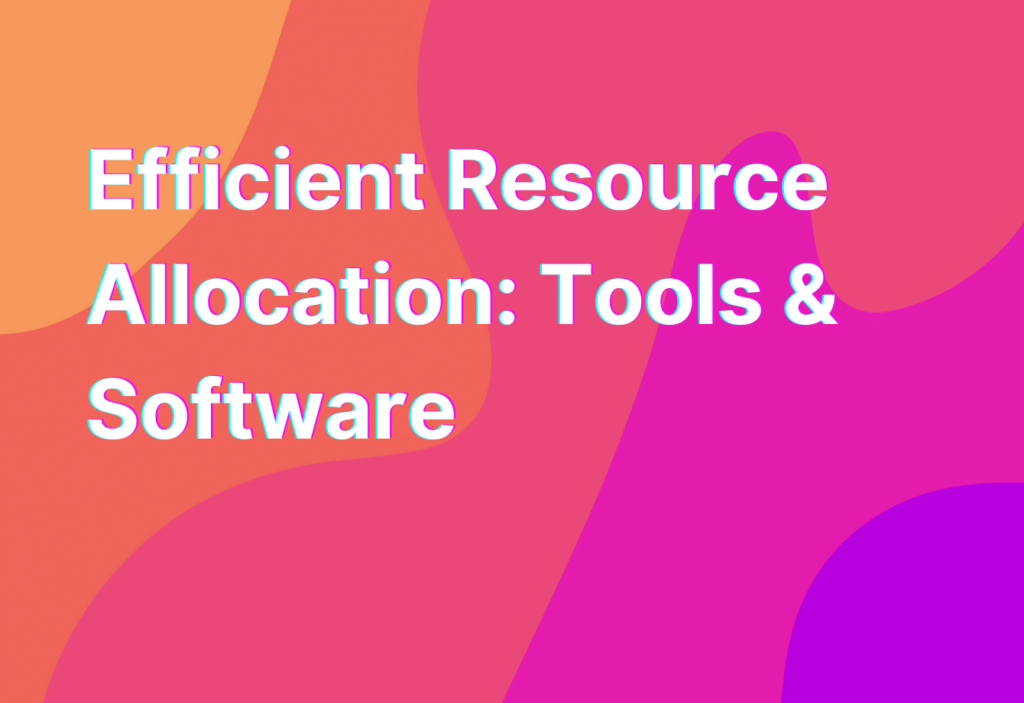Efficient Resource Allocation: Tools & Software
Resource allocation is a crucial aspect of remote work. As a remote worker, you need to effectively manage your time, tasks, and projects to ensure productivity and success. Thankfully, there are numerous tools and software available that can help you streamline your resource allocation process. In this article, we will explore some of the top tools and software that can make resource allocation a breeze.
1. Trello
When it comes to project management and resource allocation, Trello is a go-to tool for many remote workers. This intuitive and user-friendly platform allows you to create boards, lists, and cards to organize your tasks and projects. With Trello, you can easily allocate resources by assigning team members to specific tasks and setting due dates. Plus, it integrates seamlessly with other popular tools like Slack and Google Drive, making collaboration a breeze.
Check out Trello’s website here to learn more about how it can help you with resource allocation.
2. Asana
Another popular project management tool that can greatly assist with resource allocation is Asana. With its clean and intuitive interface, Asana allows you to create projects, tasks, and subtasks, making it easy to allocate resources and track progress. You can assign team members to specific tasks, set due dates, and even add dependencies to ensure smooth workflow. Asana also offers a variety of integrations, including Slack and Dropbox, to enhance collaboration and streamline resource allocation.
3. Monday.com
Monday.com is a versatile project management tool that offers a wide range of features to help with resource allocation. With its customizable boards and columns, you can easily allocate resources by assigning team members, setting due dates, and tracking progress. Monday.com also provides visual timelines and Gantt charts, allowing you to visualize your project’s timeline and allocate resources accordingly. Additionally, it integrates with popular tools like Slack, Google Drive, and Jira, making collaboration seamless.
4. Harvest
When it comes to tracking time and allocating resources, Harvest is a top choice for many remote workers. This time tracking software allows you to easily track the time spent on different tasks and projects, helping you allocate resources more efficiently. Harvest also offers features like project budgeting and expense tracking, making it a comprehensive tool for resource allocation. With its integrations with popular project management tools like Trello and Asana, Harvest seamlessly fits into your existing workflow.
5. ClickUp
ClickUp is a powerful project management tool that offers a wide range of features to assist with resource allocation. With its customizable dashboards and views, you can easily allocate resources by assigning team members, setting due dates, and tracking progress. ClickUp also provides time tracking and reporting features, allowing you to analyze resource allocation and make data-driven decisions. Additionally, it integrates with popular tools like Slack, Google Drive, and GitHub, making collaboration effortless.
Now that you’re familiar with some of the top tools and software for resource allocation, it’s time to put them to use. By leveraging these tools, you can streamline your remote work process, allocate resources effectively, and achieve greater productivity and success.
Wrapping Up
Efficient resource allocation is essential for remote workers to thrive in their roles. By utilizing tools like Trello, Asana, Monday.com, Harvest, and ClickUp, you can effectively manage your time, tasks, and projects. These tools offer intuitive interfaces, seamless integrations, and powerful features that make resource allocation a breeze. So why wait? Start exploring these tools today and take your remote work to the next level.
For more tips and insights on remote work, check out our article on Effective Risk Management Tools to Simplify Collaboration. It’s a must-read for remote workers looking to enhance their collaboration and resource allocation strategies.


